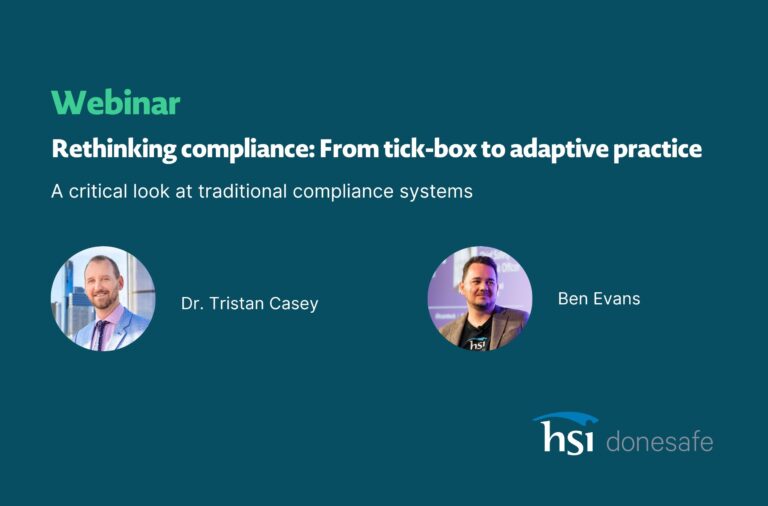
How to demonstrate the ROI of safety to the executive team
When attempting to demonstrate the ROI of an effective safety management system, many EHS departments aren’t sure where to begin. Donesafe has found that safety teams are not armed with the right tools to consistently measure EHS performance and data, or if they do have access to data, they’re not sure which safety metrics they should even be tracking.
Once implementing a system like Donesafe, this isn’t an insurmountable obstacle to overcome as you’re already collecting an abundance of data every day – every time a worker completes an inspection, hazard assessment, or any other type of safety activity. You just need to start using this data to your advantage to prove the ROI of safety programs and secure much-needed support and funding for future initiatives.
But how can you build a business case to the management team BEFORE you have access to an intelligent safety system like Donesafe? You can use the data below to begin building a case.
ROI of introducing technology to drive preventative safety
• OSHA’s review of the literature on the effectiveness of injury and illness programs estimates that companies can reduce injuries by 15-35%, compared to employers without these programs.
• Over 60% of CFOs report that each $1 invested in injury prevention returns $2 or more.
• In another survey of financial decision-makers the average perceived return on safety investment was $4.41 for every dollar spent on safety.
• Research in Europe concluded that the average cost for a minor incident is 16 times higher than the cost of the related preventive measure. For serious, very serious, or fatal incidents, the incident is 48 times higher than the cost of the preventive measure.
• Safety programs typically cost about 2.5 percent of direct labor costs. Using an eight percent reduction in losses as a typical result of safety programs, the ratio of savings-to-safety and health program costs would be 3.2 to 1.8. So if the investment in safety, broadly speaking, has demonstrated positive financial and other returns, the next consideration is what specific safety investments might prove most beneficial to your organization in terms of their ability to reduce injuries and illnesses.
Align your business case with organizational goals and strategy
Traditionally, many executives have viewed safety as a cost center within the business. Whether this is a lack of understanding on their part or a lack of communication from the safety team, the truth is safety is not a cost center. According to research from ASSP, for every $1 invested in safety a company saves at least $3 (this may be from injury prevention, lost work, administrative costs, etc) – which is exactly the type of thing your executive team wants to hear.
So when you are framing your safety performance to management it is important to map them into the larger corporate goals, and wherever possible, financial goals. For example, many organizations want to decrease costs. If you can demonstrate that as employee safety training increases, the amount of lost-time injuries decreases, which can translate into a significant ROI of safety and solid proof that more resources should be allocated to your EHS program.
The cost of an incident in the workplace has an associate cost well into the tens of thousands; lost productivity, administrative costs, compliance, and more. In 2015 alone, workplace incidents cost the US $142.5 billion, which alone highlights the importance of an efficient and well-resourced safety system.
INTERESTED?
Instantly access demos, case studies, resources, and more!
ON THE NEXT PAGE: Receive access to brochures, videos, case studies, blog posts and more
Your details will not be sold or rented to a third party. Donesafe prides itself on data security and ethical use of your contact information.
Don’t take it from us – Here’s what our clients say.

Awesome – Easy to use, easy to adapt. Fast, friendly assistance (and news + updates). Great service, great product, great people. – European Autospares Ltd

Fantastic – Really fast and really easy to use. I have been using the tool for a risk audit completed last week. Very easy to upload, comment, and get approval. Great tool. – CBRE
References
1 Liberty Mutual Workplace Safety Index (2012). Liberty Mutual Research Institute for Safety, Hopkinton, MA. 2 Injury Facts, 2013 Edition. National Safety Council, Itasca, IL. 3 Gray, A. (2007). Good workplace health & safety = good investment returns. Goldman Sachs JBWere Investment Research, Oct. 4 Liberty Mutual Chief Financial Officer Survey (2005). Liberty Mutual Insurance Group, Boston, MA. 5 OSHA Enforcement: Committed to Safe and Healthful Workplaces (2010). OSHA website
Share:



